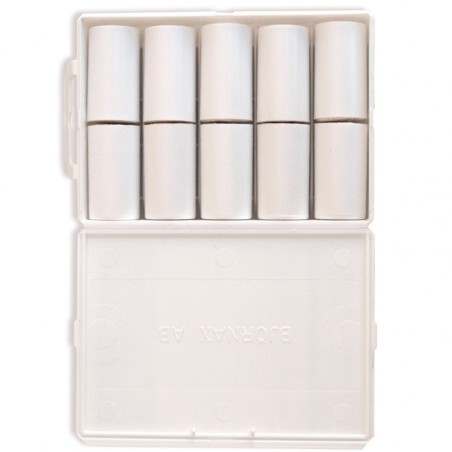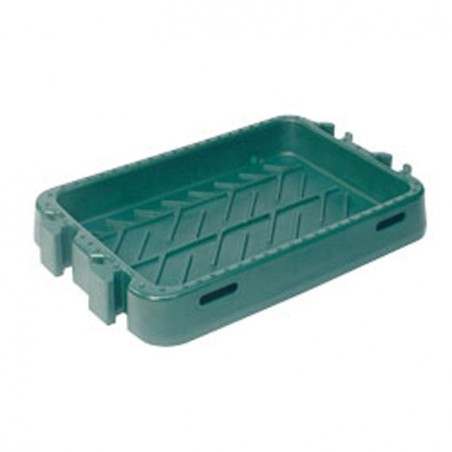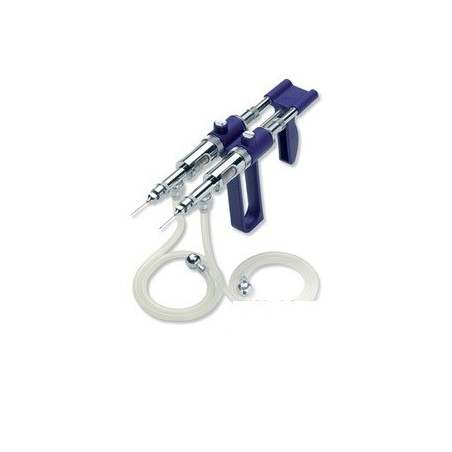Introduction
Feed safety is a major issue in pig herd and much attention needs to be paid to the possible contamination of raw materials and feed by fungi and the risk of mycotoxin production. Mycotoxins are secondary metabolites produced by filamentous fungi. They are produced on a wide variety of raw materials before, during and after harvest. The main mycotoxins considered to be important from a pig health perspective are trichothecenes, especially deoxynivalenol (DON), aflatoxins, ochratoxins, fumonisins and zearalenone. This clinical case illustrates the importance of testing all mycotoxins in raw materials regularly for health of growing pigs.

We were called in February 2016 for clinical problems on weaners in a 350-sow farrow-to-finish farm in Brittany. Clinical signs were swelling of the eyelids and forehead, incoordination, dyspnea and sudden death. They appeared few days after a feed transition. Laboratory diagnosis on live piglets with clinical signs confirmed the role of E coli O139K82.
Farm description and context
The farm is located in a high-density swine area, in Brittany (France). Sucklers are weaned at 28 days old and vaccinated against Mycoplasma hyopneumoniae (Mhyo) and Porcine Circovirus Type 2 (PCV2).
Piglets body weight (bw) at weaning is 7.5 – 8 kg in average. Piglets are fed with a commercial feed during the first stage of post-weaning, up to 12-14 kg bw. After a 3-day feed transition, piglets are fed with an on-farm made feed up to 25 kg bw.
Table 1: Diet formulation of 2d stage on-farm made feed in February 2016
| Wheat | 40% |
| Barley | 30% |
| Dehydrated meal (soybean, colza) and oil + vitamin and mineral premix | 30% |
Clinical signs appeared few days after the feed transition (around 40 days of age).
The health status of the herd is described below:
Table 2: Health status of the herd in February 2016
| Mhyo SIV |
No clinical signs on weaners |
| PRRSV | Positive stable herd |
| PCV2 | Weaners vaccinated |
Clinical report

Part 1 (February – June 2016)
Laboratory diagnostic
When the herd was visited, all diseased piglets were in good condition. Clinical signs were swelling of the eyelids and forehead, incoordination, dyspnea and sudden death.
Necropsy findings
Two live nonmedicated piglets with clinical signs were necropsied in the laboratory Labofarm® (Finalab Veterinary Laboratories Group, Loudéac, Brittany, France). Evidence of edema of subcutis of the face (photo 1) and eyelids, in the mesentery of the spiral colon (photo 2) were observed. Mesenteric edematous lymph nodes and abundance of fluid in the peritoneal cavity were also observed. These lesions associated with clinical signs were very suggestive of edema disease (ED).
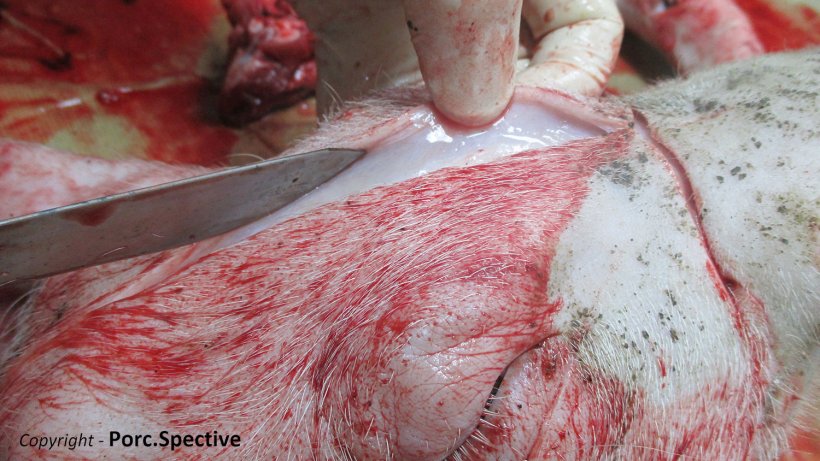
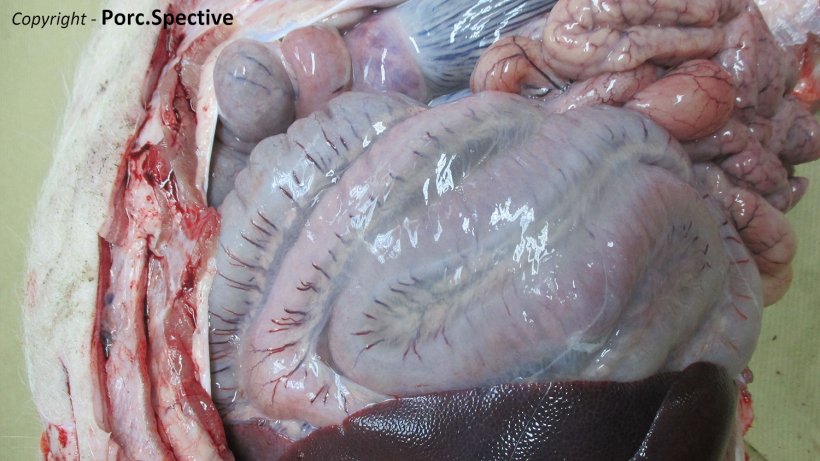
Bacteriology
Bacterial cultures of the small intestine, mesenteric lymph nodes, brain and meninges, heart blood were performed.
Hemolytic E coli 0139K82 were cultured on all samples.
Virulence factors
Genotyping by multiplex PCR was practiced to determine specific pilus and toxin genes present in the isolate:
Table 3: Virulence factors of the E coli strain isolated
| Virulence factors | 0139K82 |
| STa | Negative |
| STb | Negative |
| LTa | Negative |
| Stx2e | Positive |
| F18 (F107) | Positive |
| F4 (K88) | Negative |
| Aida | Negative |
According to clinical signs and laboratory diagnosis in weaners Edema Disease (ED) might be responsible for the high mortality rate in this herd.
Risk factors investigations
The first step before formatting control strategies was to study risk factors predisposing the apparition of ED in weaners.
Animals: Three litters are mixed per pen. No relation with sow parity was noticed.
Facilities: Facilities management was good. Farmer respects an All In / All Out system with scrupulous sanitation. Environmental stresses are low (few temperature variation, correct ventilation, good comfort).
Water quality: The bacteriological and microbial quality of drinking water was good at sampling times. Water line was purged every morning and regular control of chlorine concentration was performed by farmer.
Nutrition: The farmer started manufacturing his 2d stage post-weaning feed few weeks before the outbreak.
- Distribution: Piglets were fed ab libitum. When the farmer noticed the first sign of ED, piglets were fasting for at least 24 hours.
- Diet formulation: No error in diet formulation and no prejudicial difference between 1st stage and 2d stage feed in protein nor energy levels were noticed.
- Diet particle size: Slower gut transit time and gut stasis allow E coli the opportunity to attach and time to multiply (Pluske et al. 2002) and to produce toxins. According to this, we can suppose that a high particle size may predispose to ED outbreaks. On the other hand comminuting grain too ‘fine’ may have adverse consequences for the prevalence of enteric diseases (gastric ulceration for example). In on-farm made feed granulometry has to be regularly tested, the results in our case are presented in the table below:
Table 4: Particle size of in-farm 2d stage PW feed in February
| Particle sizes | Critical values | In-farm made feed | |
| Reference 1 | Reference 2 | ||
| >3,15 mm | 0% | 0,50% | 0% |
| >2 mm | 25-35 % | 2,00% | 1,80% |
| >1 mm | 25,00 % | 35,80 % | |
| >0,5 mm | 20-40 % | 39 % | 32,00 % |
| >0,3 mm | 10-20 % | ||
| >0,25 mm | 27,00 % | 20 % | |
| <0,25 mm | 10-20 % | 6,50 % | 10 % |
In February, the particle size was correct according to manufacturers’ recommendations (reference 1 and 2).
- Mycotoxins: There are several different methods of analysis available for mycotoxins diagnosis. In France, feed companies usually control only deoxynivalenol (DON) level with an enzyme-linked immunosorbent assay (ELISA) test. This kit test is rapid, relatively inexpensive. In this farm, mycotoxin rates in all controlled raw materials (wheat, barley) and complete feed were under the threshold. Raw materials and feed were supposed to be of low risk for mycotoxins.
Control strategies
Vaccination: We advise the farmer a vaccination to enhance piglets’immunity. In France only one commercial injectable vaccine was available for the prevention of E. Coli ED. This vaccine consisted in a genetically modified Stx2e toxin. It has been administrated to sucklers at 12 doa since late May. According to vaccine producer, piglets may be correctly protected at 40-45 doa when outbreaks happened.
Antibiotic supplementation: For the previous batches without vaccination and for batches affected by ED, trimethoprim (5 mg/kg bw)-sulfamids (25 mg/kg bw) combination was chosen according to sensitivity of E coli strain.
Part 2 (June 2016 – January 2017)
Some cases of post-weaning diarrhea (PWD) appear with mortality in June. The E coli strain involved in PWD was E coli K88 Stb. Despite vaccination, some cases of ED (E coli O139K82) were regularly diagnosed (laboratory diagnosis in July and August) and the mortality rate was higher compared with previous years and months.
Changes in control strategies
Diet particle size: Particle size was tested again in August 2016:
Table 5: Particle size of in-farm 2d stage PW feed in August
| Particle sizes | Critical values | In-farm made feed | |
| Reference 1 | Reference 2 | ||
| >3,15 mm | 0% | 0,50% | 0,20 % |
| >2 mm | 25-35 % | 2,00% | 9,30 % |
| >1 mm | 25,00 % | 48,80 % | |
| >0,5 mm | 20-40 % | 39 % | 24,60 % |
| >0,3 mm | 10-20 % | ||
| >0,25 mm | 27,00 % | 12,10 % | |
| <0,25 mm | 10-20 % | 6,50 % | 5 % |
The particle size was higher than usual recommendation. Processing was corrected in order to get the same size as in February.
Diet formulation: In October the diet formulation was changed. A high fiber diet was manufactured in farm. The nutritive value of the feed was reduced. Protein level and digestible energy were reduced by increasing the barley incorporation rate.
Table 6: Diet formulation of 2d stage on-farm made feed in February and after change in October 2016
| 2d stage PW diet before October | 2 stage PW diet since October | |
| Wheat | 40% | 20% |
| Barley | 30% | 50% |
| Commercial supplement | 30% | 30% |
Vaccination: In December, a trial was conducted with an orally live avirulent vaccine, containing a F4-positive F18-positive Stx2e-negative strain. 2 following batches were vaccinated at 21 doa. All sucklers were individually drenched. Despite this new vaccination protocol, PWD and ED appeared and were confirmed by laboratory diagnosis in December.
Mortality rate was higher during the second semester despite improvement in control strategies in the farm.
Part 3 (January 2017)
In front of these vaccination failures and recurrent episodes of PWD and ED, we decided to take into consideration all risk factors again (water quality, feed ration, housing conditions) and to analyze mycotoxins levels in each raw material by chromatography at the laboratory Labocea (Ploufragan, Brittany, France).
Mycotoxins analysis
Labocea uses a combination of high performance liquid chromatography (HPLC) and mass spectroscopy to provide quantitative results. This technic is under exploited for routine diagnosis of mycotoxins in France. The method allows to detect more than one kind of mycotoxins. For each family, the test detects all mycotoxins in the sample. Results for trichotecenes in barley and wheat stored in the farm are exposed in the table below:
Table 7: Trichotecenes concentration (mg/kg feed 12% humidity) in wheat and barley in January 2017
| Mycotoxins | Critical value | ||
| Raw material | Barley | Wheat | |
| Trichotecenes type A | |||
| Diacetoxyscirpenol (DAS) | 0 | 0 | |
| 15monoacetoxyscirpenol | 0 | 0 | |
| T-2 toxin + HT-2 toxin | 0,055 | 0 | |
| T-2 tetraol | 0,03 | 0 | |
| T-2 triol | 0 | 0 | |
| Verrucarol | 0 | 0 | |
| Trichotecenes type B | |||
| Deoxynivalenol | 0,02 | 0,195 | |
| Deoxynivalenol-3-glucoside (D3G) | 0,01 | 0,015 | |
| De-epoxy Deoxynivalenol (DOM-1) | 0 | 0 | |
| 15-O-Acetyl Deoxynivalenol | 0 | 0 | |
| 3 Acetyldeoxynivalenol | 0 | 0 | |
| Fusarenone X | 0 | 0 | |
| Nivalenol | 0,015 | 0,02 | |
| DON equivalent | 0,9 (acute intoxication) 0,2 (chronic intoxination) |
0,955 | 0,31 |
Other mycotoxins were absent or under significative values.
The toxicity of combination of mycotoxins cannot be predicted based on their individual toxicities. Studies about the effect of mycotoxins were carried out taking into account only one mycotoxin but the effect of mycotoxins combinations can be antagonistic, additive or synergistic (Oswald, 2015). According to these combination effects, equations for DON equivalence taking into account all trichotecenes tested are proposed but to our knowledge there is no scientific consensus to propose standardized equations to evaluate effect of a combination of mycotoxins.
Recommendations for critical values for mycotoxins in feedstuffs are proposed in Europe. The European Commission recommendation of 17 august 2006 might be taken into account for DON, Zearalenone, Ochratoxin A and fumonisins. For Aflatoxin and Rye Ergot, the Directive 2002/32/EC of the European Parliament is available.
We considered DON critical value higher than 0.9 mg/kg 12% humidity (European Commission recommendation of 17 august 2006) for acute intoxication or higher than 0.2 mg/kg 12% humidity for chronic intoxication (feed ingested daily) is of risk for pig health.
In our case, trichotecenes level expressed in DON equivalent in wheat and barley was higher than the acceptable level according to the equation used. Even diluted in the complete 2d stage PW feed, the trichotecenes level was over the critical risk value for piglets feed consume daily.
Adapted control strategies
According to these results, it was decided to add 2000 ppm of a mycotoxin deactivation product in in-farm made feeds (2d stage PW diet – early/mid/late finishing diets – gestation and lactation diets). All storage silos were cleaned and disinfected. The processing of barley, wheat and maize has been changed. Now, grain dusts produced from the harvesting, handling and storage are eliminated before comminuting grains in order to reduce mycotoxins risk.
ED vaccination has been maintained for the moment.
Results
The global health of the herd improved after these changes. All ages are concerned. Mortality rates decreased in weaners but also in growing and finishing pigs. The farmer notices less farrowing and lactating issues, and piglets’ body weight at weaning increased.
Conclusion
Much attention needs to be paid to the possible contamination of raw materials and feed by fungi and the risk of mycotoxin production. The ingestion of mycotoxin-contaminated feed can induce acute diseases, and the ingestion of low doses of fungal toxins also causes damage in case of repeated exposure (Bryden, 2012; Maresca et al. 2010). Within the large panel of toxic effects that mycotoxins display, immune-modulatory properties have been described (Oswald, 2015). This effect increase the susceptibility to infectious diseases: in our case, weaners were more likely to develop ED and PWD. Immunity acquired through vaccination is impaired by mycotoxin ingestion. T-2 toxin reduced the vaccinal response to the model antigen, ovalbumin, acting on the cellular and the humoral response respectively (Oswald, 2015).
This case illustrates the importance of mycotoxins regular measures, rigorous surveillance and control in farm manufacturing feed on their own. The choice of the analysis assay is of importance and despite the cost, a complete analysis is recommended. This technic, easily available in Labocea, is under exploited for routine diagnosis of mycotoxins in France.




